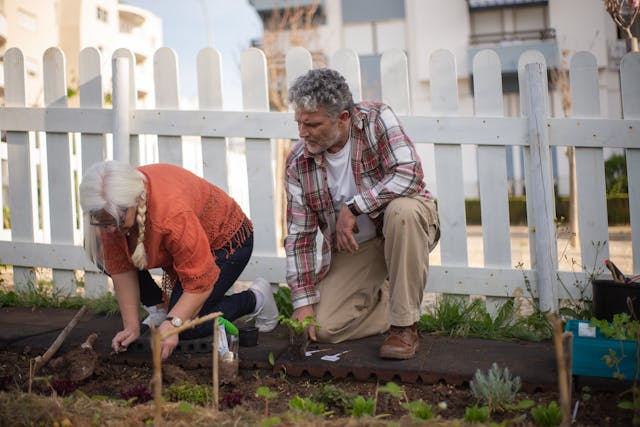24 April 2024
Just a few weeks ago we explored easier ways to garden. Now we are getting down to the fun part.
During the pandemic people were at home and had lots of time to start and maintain gardens. Now that we are back to frequent mobility, even if you are remote workers, a few short cuts wouldn’t hurt.
Perspective
Before you put a spade to soil, decide what you will plant and where.
Look at your area from different sides. From inside the house, the side, your neighbor’s view, from a vehicle. For hardscaping decide whether a pond or water feature needs some fencing to prevent injury to small children or pets. See the raised beds that make so much sense? Are they still at the right height? Are they in the best spot or are they somewhat of an eyesore?
Check the pathways. Make sure they are as smooth as possible to avoid the risk of falls or tripping. Is it level?
Most plants, including trees and shrubbery, don’t stay one size. If your trees in full leaf create too much of a canopy, the sunlight will not reach your plants. Is it time to rethink placement?
Seating is always nice. Have some area in a shady spot where you can find a bit of a respite from the effort of weeding or harvesting. It can also be the perfect place for a quiet cup of coffee before starting your day or a refreshing beverage at the end of the day.
Think Inside the Box
Window box, that is. Not every plant needs to be at lawn level. Planters, window boxes, containers, and vertical gardens are all great ideas.
Keep the size of free-standing planters no larger than three feet in diameter. That will make it easier to reach all points without straining.
Vertical gardens are an easy way to add some pizzazz to your landscape. They can be installed on fences or other upright structures that allow some aesthetic interest and make gardening at eye-level an easy prospect. Particularly effective are small plants, herbs, and succulents.
Right Plant/Right Place
Start with grouping your plants by their need for sun, i.e. full sun, part shade, etc. and water requirements. Also look at the availability of watering. If you need to haul a watering can, with multiple refills, you are less likely to keep the plants well hydrated. Look at availability of a faucet and consider soaker hoses or drip irrigation.
Choosing plants you will need to consider maximum height and maximum spread to create your ideal area. Also understand the rate of growth, drawbacks like thorns, and other issues. Go back to the part about perspective. Think of how the area will look from all sides when it is in full bloom.
Good decisions early will save effort, money, and time in the long run.

Seeds, Plants, and Options
Starting plants from seeds is often possible, depending on the plant. However, this late in the spring, it is unlikely that you will have a tomato plant ready for the ground. Seed starting needs pre-planning and some careful oversight.
Transplants, especially some flowers, are reasonably priced at nurseries, big box stores, and charity plant sales. Root vegetables like carrots and beets don’t transplant very well. But cole crops like broccoli, cabbage, etc. are preferred as transplants so that they can mature before the heat of summer sets in and they slow production. Tomatoes and peppers are good examples of those better suited to transplant at this time of the year.
If you are going to grow from seed, seed tape is a great option. It reduces the amount of time bent over the ground, makes it easier to handle those very small seeds, and is great to do with kids. Cut a paper towel (toilet paper or tissue paper) into strips 2 inches wide and 12 inches long. Use a ruler and pencil to mark the distance between seeds. For this go to the seed packet and see their recommendation for spacing. Make a paste of ½ cup flour and enough water to make a workable paste but not too liquid (or your paper will disintegrate). Put a seed on each dot or line on the paper towel. Place a a drop of the flour paste on top of the seed. Allow the paste to dry thoroughly. When the soil temperature is appropriate for the plant, dig a trench at the proper depth (again check the seed packet for the right height) and put the strip paper towel on the ground. Cover the seed tape and water in as required. The seed will germinate through the flour paste and the paper towel will eventually dissolve.
Safety First
Keep your phone with you, especially if you work alone, in case you need some sort of assistance.
Wear sunscreen and hats.
Take frequent breaks and rehydrate. A good rule of thumb is 8 ounces of water for each hour outdoors and more if it is extremely warm.
